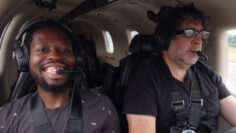How Safe is General Aviation?

General aviation refers to all civil aviation activities that are not categorized as commercial airline operations or military aviation. It encompasses a wide range of activities, including private flying, recreational flying, flight training, aerial photography, and business aviation. General aviation plays a vital role in supporting local economies, providing transportation to remote areas, and fostering innovation in aviation technology. However, when it comes to safety, it is essential to evaluate the measures and practices in place to ensure the well-being of pilots, passengers, and the general public.
Safety Measures in General Aviation
Regulatory bodies and oversight
The Federal Aviation Administration (FAA) in the United States is responsible for regulating and overseeing general aviation operations. They establish safety standards, issue certifications, and enforce regulations to ensure the safe operation of general aviation aircraft. On an international level, the International Civil Aviation Organization (ICAO) sets global standards and guidelines for aviation safety.

Pilot certification and training requirements
To fly a general aviation aircraft, pilots must obtain the appropriate certifications and training. The process typically involves obtaining a Private Pilot License (PPL) after completing the required flight hours, passing written and practical exams, and demonstrating proficiency in various flight maneuvers. For pilots who wish to fly in instrument meteorological conditions, an Instrument Rating (IR) is necessary. Commercial operations require a Commercial Pilot License (CPL), and individuals interested in becoming flight instructors must obtain a Flight Instructor Certification (CFI).






